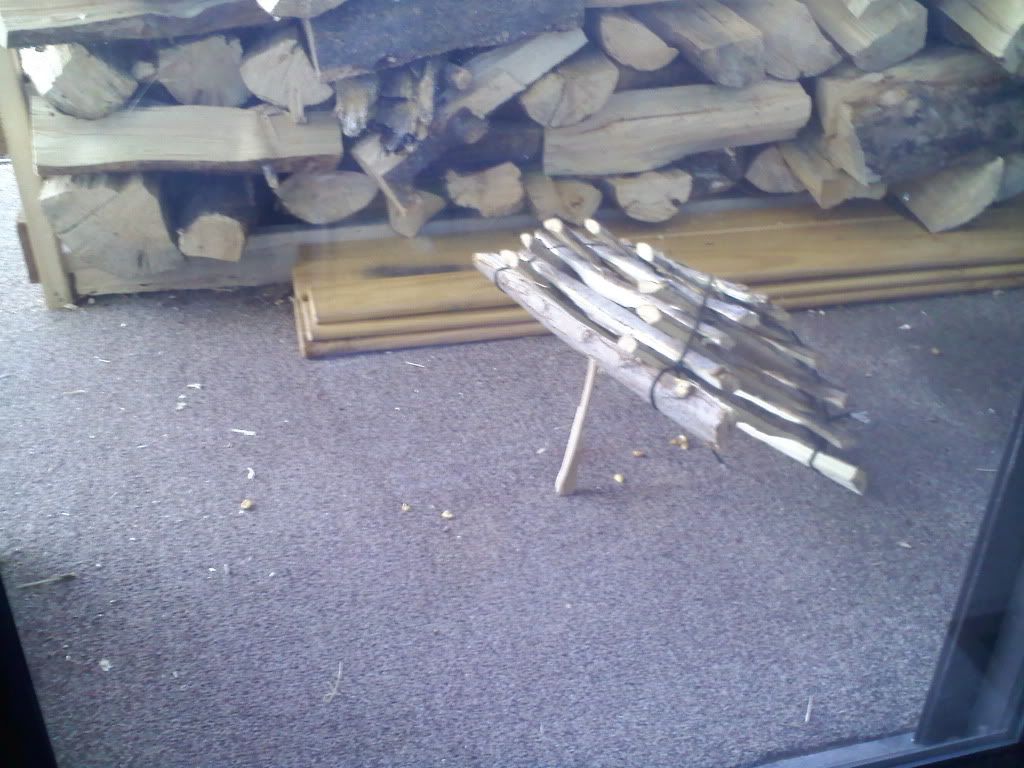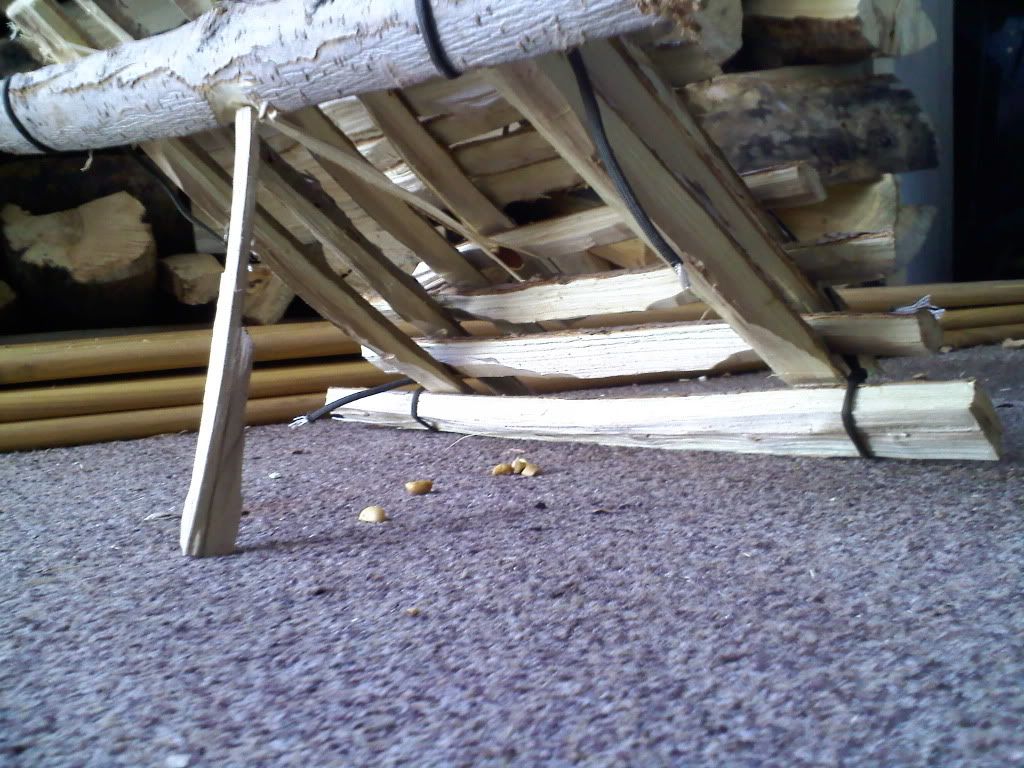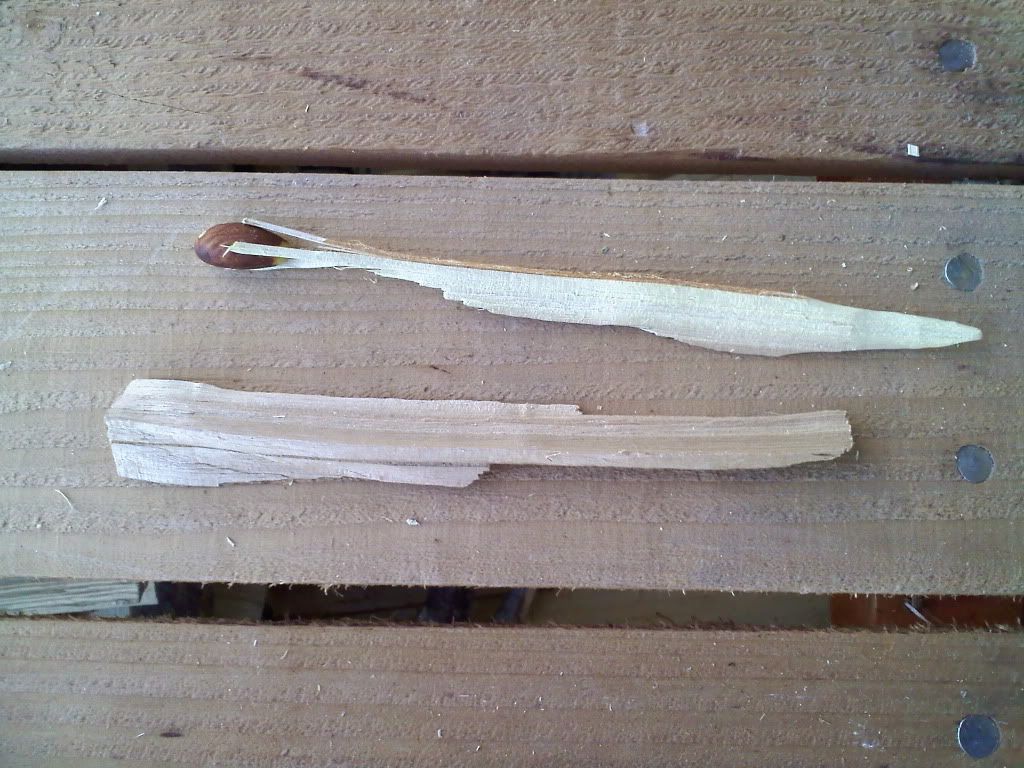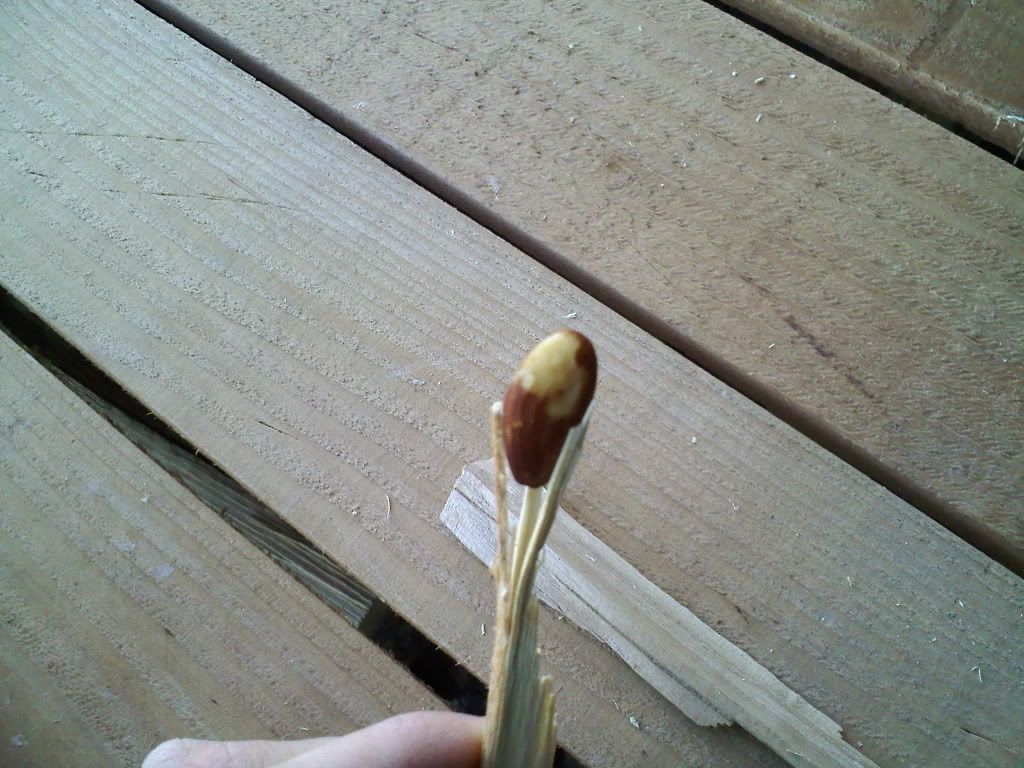I tried my hand at making an Arapuca a few weeks ago. I used a bunch of Elm that I had battoned down into kindling. I think the longest pieces were only around 14-16 inches long. I don't think this is long enough, but it was all I had. I'd like to try using sticks that are at least 24 inches long to see how tall a trap it would make.
The second issue is that each piece was a quarter of a larger log, so they are triangle shaped and much thicker than if you just used small, round twigs. The issue with the sticks being so large, is that it makes the space between each layer too wide. You couldn't catch a Chipmunk with the first trap for sure.
Before I started making the trap, I was concerned with how much it would weigh. When you see me trying to slide a brick into the top in the time lapse video, I was seeing if it would fit to give the trap more weight. Fortunately, I was using pretty fresh elm and the trap was pretty heavy.
Here is the first video:
After thinking for a while about what to do with my too wide sticks, I decided that I'd try and batton the inside corners off to make each piece more thin. That didn't work very well as it was difficult to try and steer the knife through the branch to keep it straight. At one point I tried to just whittle a notch at the end of each branch, but that was way too much work. Also, I wasn't going to be able to tell exactly how large, and where to place each notch unless I built the whole thing first, marked it all, then rebuilt it one piece at a time to check fitment. That would have taken a lot more effort than I was willing to put into the project.
I eventually just decided it would be easier to whack the ends of the inside corner off of each branch with my knife. I was outside during the day, so no worrying about making too much noise like the night I made the first video. I made a time lapse of me chopping up each side of 25 or so branches, but I doubt anyone would want to see it. The benefit of this method is that it keeps the branch thick in the middle and narrow at the ends. This helps keep the gaps in the center smaller, and retains weight. I don't think birds are very strong, but who knows about squirrels.
So this second video is me putting it together the second time. Every time I watch the video, I can't help but be distracted by my cat in the background.
I also took a few pictures of the trap, the bait, an example of how to set the trap, and it all set up waiting to catch a squirrel.
Here are the two sticks I used to hold the bait. I tried to really wedge that nut in there, because I'm not very good at setting the trap to be as sensitive as I'd like.
You basically set up the two sticks like this. Then you set the trap on the top of the horizontal stick. If you set it up right, it should only take a small movement to spring the trap.










 Reply With Quote
Reply With Quote


